Moʻokuʻauhau - Our Roots
In 2000 a group of community members founded the Waiʻ anae Community Re-Development Corporation (WCRC) to grow two of the community’s greatest assets: the rich food producing traditions of the region and youth who were not achieving their academic potential. WCRC created a social enterprise called MAʻ O Organic Farms (MAʻO) and began developing programming to mentor, educate and empower youth. For twenty years, MAʻO has catalyzed educational and entrepreneurial opportunities around youth and land assets to redefine our community by our strengths and address the root causes of intergenerational cultural, social, economic and environmental poverty.
MAʻ O is an acronym for Mala ʻ Ai ʻ Opio, which translates to youth food garden and is an affirmation of our belief that when we restore the relationship between youth and ʻ āina, we restore our ancestral connection to the land and foster an interdependence that returns abundance and prosperity to the community.
Waiʻanae - our community
Located on the west side of O‘ahu, Waiʻ anae moku (region) was in ancient times home to a strong and cohesive culture and produced adequate food for its people while managing its land and water resources sustainably. Today Waiʻ anae is home to the world’s largest population of native Hawaiians, who make up 60% of the community, compared to 20% statewide. The community also reflects the rich cultural legacy of plantation-era migration and more recent arrivals from Micronesia and beyond.
While it should be a vibrant rural community, Waiʻ anae has been undermined by decades of underinvestment following the cultural and economic violence of colonialism. Much of the population is mired in intergenerational poverty fueled by a historic severing of land and people and perpetuated by a lack of educational attainment and economic opportunities.
The community reflects and concentrates the challenges faced by Hawaiʻ i at large: a cost-of-living crisis, the highest per capita homeless population in the nation, a lack of resiliency in the face of climate change, and a vulnerable import-dependent food system. Urbanization and the overdevelopment of scarce resources have produced a growing disconnect between kanaka (people) and ‘āina, which manifests in high incidences of preventable diseases, homelessness, and hunger. The region’s high poverty rate is entrenched in the relationship between low educational attainment and low income: low post-secondary attainment leaves well-paying jobs out of reach for the majority.
Despite these challenges, Wai‘anae residents still maintain a rural vision, a willingness to perpetuate our community’s ‘country’ values and to offer hope and validation to our ‘ōpio (youth) of their personal and cultural identities.

